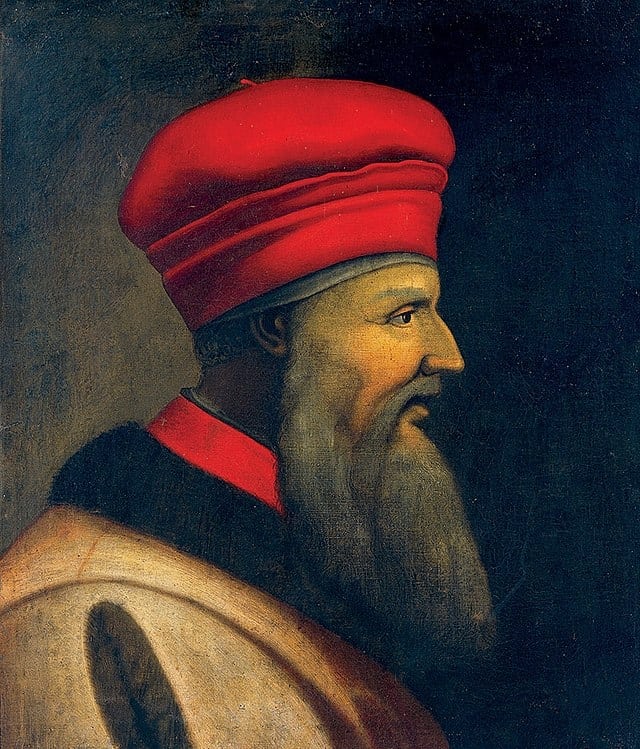
Skanderbeg
Gjergj Kastrioti (Medieval Albanian: Gjergj Castrioti; Latin: Georgius Castriota; Italian: Giorgio Castriota; 1405 – 17 January 1468), known as Skanderbeg (Albanian: Skënderbeu or Skënderbej, from Ottoman Turkish: اسکندر بگ, romanized: İskender Bey; Latin: Scanderbegus; Italian: Scanderbeg), was an Albanian feudal lord and military commander who led a rebellion against the Ottoman Empire in what is today Albania, North Macedonia, Greece, Kosovo, Montenegro and Serbia.
A member of the noble Kastrioti family, he was sent as a hostage to the Ottoman court. He was educated there and entered the service of the Ottoman sultan for the next twenty years. His rise through the ranks culminated in his appointment as sanjakbey (governor) of the Sanjak of Dibra in 1440. In 1443, during the Battle of Niš, he deserted the Ottomans and became the ruler of Krujë, Sfetigrad, and Modrič. In 1444, the council of feudal lords that historians would later call the League of Lezhë named Skanderbeg its chief military commander (first among equals). The league consolidated nobility throughout what is today Northern Albania, under the protection of the King of Naples, Alfonso V, with Skanderbeg as captain general. Thus, for the first time Albania was united under a single leader. Skanderbeg’s rebellion was not a general uprising of Albanians, because he did not gain support in the Venetian-controlled cities of the north or in the Ottoman-controlled south. In addition to Albanians his followers included Slavs, Vlachs, and Greeks; he also had at his service Venetian and Neapolitan mercenaries. The resistance led by him nevertheless brought Albanians of different regions and dialects together in a common cause against foreign aggression, helping define Albanian ethnic identity.Despite his military valor he was only able to hold his own possessions within the very small area in today’s northern Albania where almost all of his victories against the Ottomans took place. Skanderbeg’s military skills presented a major obstacle to Ottoman expansion, and many in western Europe considered him to be a model of Christian resistance against Muslims. For 25 years, from 1443 to 1468, Skanderbeg’s 10,000-man army marched through Ottoman territory, winning against consistently larger and better-supplied Ottoman forces. He was greatly admired for this.Skanderbeg always signed himself in Latin: Dominus Albaniae (“Lord of Albania”), and claimed no other titles but that in surviving documents. In 1451, through the Treaty of Gaeta, he recognized de jure the sovereignty of the Kingdom of Naples over Albania, ensuring a protective alliance, although he remained a de facto independent ruler. In 1460–61, he supported Ferdinand I of Naples in his wars against John of Anjou and the barons who supported John’s claim to the throne of Naples.
In 1463, he became the chief commander of the crusading forces of Pope Pius II, but the Pope died while the armies were still gathering. Together with Venetians, he fought against the Ottomans during the Ottoman–Venetian War (1463–1479) until his death in January 1468. He ranks high in the military history of that time as the most persistent—and ever-victorious—opponent of the Ottoman Empire in its heyday. He became a central figure in the Albanian National Awakening in the 19th century. He is much loved in modern Albania by both Christians and Muslims, and is commemorated with many monuments and cultural works.

